 |
 |
 |
 |
 |
 |
 |
 |
 |
 |
 |
 |
 |
 |
 |
 |
 |
McCarthy Woods and Meadow
McCarthy Woods and Meadow comprise the second anchor of the Poets’ Pathway.
McCarthy Woods and the adjoining meadow are the heart of the Poets’ Pathway. Not only are they the centre of the pathway, they are the genesis of the idea. This is the area where Bill Royds, snow-shoeing, was struck by the idea of linking the land of Ottawa to the beautiful poetic lines and images he had cherished for nearly 50 years. Not only is this area the largest unspoiled woods in Ottawa, full of tall maples, long grasses and meadow flowers in summer, but it is also where the Poets’ Pathway would one day like to have acknowledgment of our poets, in some of the woods and meadows where they found stillness, and the beating heart and fertile soul of the land they loved.
The spires of the Parliament Buildings, the “towers” beloved of the Confederation Poets, can just be seen from one grassy knoll. Many paths run through the woods, and in the summer wildflowers and raspberries beckon in the shade of the huge maples. Songbirds call, insects dart and toads hop, almost invisible beside fallen logs. In the early fall the lime green leaves and black trunks gleam in the rain, and soon the treetops flame and dry leaves crunch underfoot. In November the reds and oranges turn to mournful greys and crisp browns, as the trees tremble in the winds. And in the white winter air, the naked woods await skis and snowshoes, ruddy cheeks and woollen toques. In all seasons McCarthy Woods and the meadow are a place of peace and stillness, a home to wildlife, an oasis in the city.
|
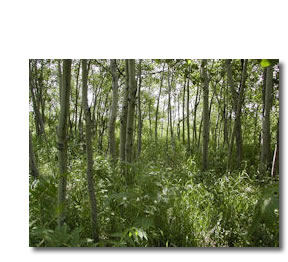 |
|
 |
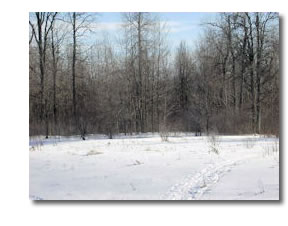 |
 |
SOLITUDE
by Archibald Lampman
HOW still it is here in the woods. The trees
Stand motionless, as if they do not dare
To stir, lest it should break the spell. The air
Hangs quiet as spaces in a marble frieze.
Even this little brook, that runs at ease,
Whispering and gurgling in its knotted bed,
Seems but to deepen with its curling thread
Of sound the shadowy sun-pierced silences.
Sometimes a hawk screams or a woodpecker
Startles the stillness from its fixèd mood
With his loud careless tap. Sometimes I hear
The dreamy white-throat from some far-off tree
Pipe slowly on the listening solitude
His five pure notes succeeding pensively. |
|
 |
 |
WHEN SPRING GOES BY
by Duncan Campbell Scott
The winds that on the uplands softly lie,
Grow keener where the ice is lingering still
Where the first robin on the sheltered hill
Pipes blithely to the tune, "When Spring goes by!"
Hear him again, "Spring! Spring!" He seems to cry,
Haunting the fall of the flute-throated rill,
That keeps a gentle, constant, silver thrill,
While he is restless in his ecstasy.
Ah! the soft budding of the virginal woods,
Of the frail fruit trees by the vanishing lakes:
There's the new moon where the clear sunset floods,
A trace of dew upon the rose leaf sky;
And hark! what rapture the glad robin wakes-
"When Spring goes by; Spring! Spring! When
Spring goes by.”
|
|
 |
| |
 |
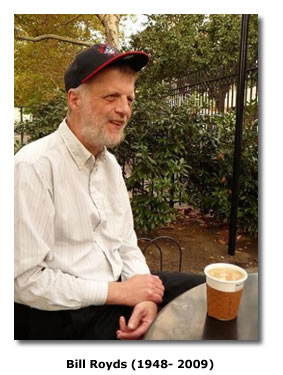 |
|
 |
A STORY OF BILL ROYDS
or
How The Poets’ Pathway Dream Came To Be
One winter day, when Bill Royds, an avid naturalist and lover of the outdoors, was snowshoeing in McCarthy Woods, the crunch of the snow beneath his shoes brought to his mind the lines in Archibald Lampman’s famous last poem, “Winter Uplands.” He thought of dedicating the land to the poets. Bill brought his idea to activist Erwin Dreessen and the Greenspace Alliance. Steven Artelle had written his Ph. D. thesis on 19th century Ottawa and her writers. Erwin and Steven became the stewards of Bill’s idea, co-chairs of the Poets’ Pathway Committee, as they decided to try and link together Ottawa’s green spaces as a natural memorial to Ottawa’s first famous poets. |
|
 |
 |
 |
WINTER UPLANDS
by Archibald Lampman
The frost that stings like fire upon my cheek,
The loneliness of this forsaken ground,
The long white drift upon whose powdered peak
I sit in the great silence as one bound;
The rippled sheet of snow where the wind blew
Across the open fields for miles ahead;
The far-off city towered and roofed in blue
A tender line upon the western red;
The stars that singly then in flocks appear,
Like jets of silver from the violet dome,
So wonderful, so many and so near,
And then the golden moon to light me home--
The crunching snowshoes and the stinging air,
And silence, frost and beauty everywhere. |
|
|
|
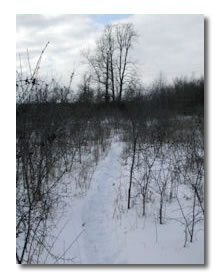 |
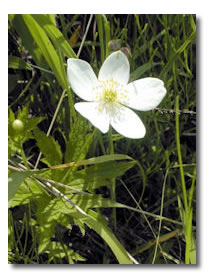 |
 |
| |
SPRING
by William Wilfred Campbell
There dwells a spirit in the budding year--
As motherhood doth beautify the face--
That even lends these barren glebes a grace,
And fills grey hours with beauty that were drear
And bleak when the loud, storming March was here:
A glamour that the thrilled heart dimly traces
In swelling boughs and soft, wet, windy spaces,
And sunlands where the chattering birds make cheer.
I thread the uplands where the wind's footfalls
Stir leaves in gusty hollows, autumn's urns.
Seaward the river's shining breast expands,
High in the windy pines a lone crow calls,
And far below some patient ploughman turns
His great black furrow over steaming lands. |
|
 |
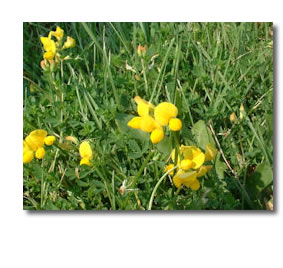 |
 |
John Sankey on the Southern Corridor
John Sankey, Chair of the Hunt Club Riverside Community Centre, is a passionate field naturalist who has written many articles for urban people giving information and advice about wildlife in Ottawa. http://www.johnsankey.ca/naturalist.html
This area was called The Uplands by early settlers - it was one of the first to emerge from the glacial Champlain Sea that resulted in a number of unique plant communities in the area.
There is no evidence of any human presence prior to European settlement.
Daniel O'Connor, who named O'Connor Street after himself in a famous deal with Nicholas Sparks, bought the land in 1829. In 1883, it was sold to the Dowler family who farmed the western portion and managed the woods at the east end as a woodlot. As a result of their management, the area is exclusively deciduous and the woods mostly red maple. The soil in the woods is silt, with slow drainage to the east through a swampy area east of McCarthy Road.
Donald McCart(h)y, together with his father William and older brother John, held a total of 225 acres in the area by 1860. The family name was given to McCarthy Road and hence to the Dowler's
woodlot, McCarthy Woods.
In 1950, Jacques Gréber published his Plan for the National Capital which included a ring road around Ottawa. In 1953, the Federal District Commission (now NCC) purchased the land from the Dowlers for the road. Management of the woods then ceased. Most of the trees are now 80 years old and are dying due to root rot in the waterlogged soil. Meanwhile, the ring road has been established
to the south, Hunt Club Road, so the land is no longer needed by the NCC.
There are many walking trails throughout the Poet's Park area. The understory of the mature woods includes ferns and flowering plants, but is mostly red maple seedlings. The shallow soil of the land formerly planted in livestock grasses is being overtaken by adventive shrubs, especially buckthorn, planted by the birds who eat its berries. The northern portion is limestone outcrop, home to red-bellied snakes and red sumac. The only conifers are small ones recently planted by abutting landowners, and along the railway planted by the CNR.
For his photos and a description of this area
For his history of the Southern Corridor
For his lovely photo essay about the meadow |
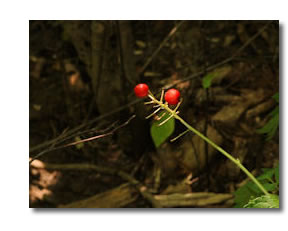 |
 |
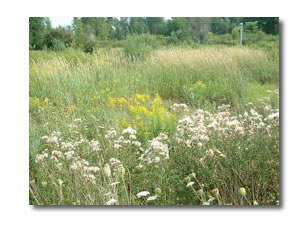 |
 |
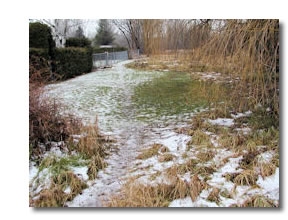 |
 |
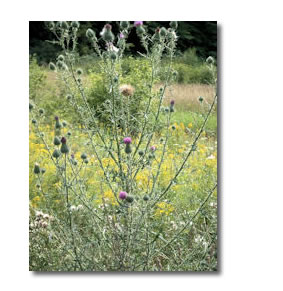 |
Information From a 2003 study for the Greenspace Alliance
McCarthy Woods and Southern Corridor
Overall Criteria Rating for Site: High
DESCRIPTION:
The area consists of a large, mature, deciduous forest, and associated regenerating thickets and fields in Riverside Park. Its size is 78.2 hectares. The interior is roughly 19 hectares, with an extensive internal informal pathway system. There are residential areas adjacent to natural areas on all sides, and school grounds to the south.
There are three kinds of habitat: mature deciduous forest (Sugar Maple) in the east, extensive Cultural Upland Field and Thicket (Hawthorn White Elm, Sumac, pasture grasses) across the western half, younger Upland Mixed Forest (White Cedar, Trembling Aspen, White Elm) in the southwest. There are 204 native plant species, both common and uncommon urban breeding birds and mammals, and four species of invasive plants.
The study finds particularly significant:
1. Two Regionally Rare species (Cardamine concatenata, Galium boreale) and five Regionally Uncommon plant species in the woodland and regenerating field habitats;
2. It is the largest, most natural example of mature maple forest in urban Ottawa;
3. It has an exceptionally large urban area of continuous natural habitat;
4. It has exceptionally high native plant diversity;
5. It is the largest remaining (formally dominant) till-based natural habitat in Ottawa;
6. It is a major wildlife corridor component between the Rideau River corridor, Sawmill Creek and the eastern NCC Greenbelt areas;
7. Species such as the Black-throated Green Warbler, Pileated Woodpecker, and Star-nosed Mole are present in woodland habitat;
8. There is a complex of intact woodland hydrological features (seepages, spring pools) throughout the forest area;
9. It is a prime feeding habitat for urban woodland raptors (Screech Owl, Cooper’s Hawk, Merlin, etc.) in the scrub and meadow in the western half of the site.
The study suggests that care be taken to maintain the forest canopy, reduce buckthorn, and create a buffer zone between the woodlands and developed areas. It recommends research into the relationship between meadow and woodland habitats and populations, and the area as a wild-life corridor, and it suggests a single rock-crush trail to minimize site impact.
These woods are THE ecologically superior maple forest in urban Ottawa; they have exceptional native biodiversity, and direct, functional connection with the adjacent meadow.
|
|
 |
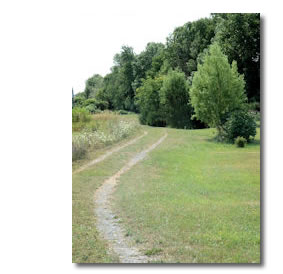 |
 |
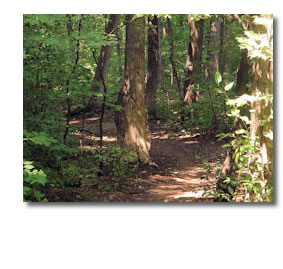 |
 |
IN SNOW TIME
by Duncan Campbell Scott
I have seen things that charmed the heart to rest:
Faint moonlight on the towers of ancient towns,
Flattering the soul to dream of old renowns;
The first clear silver on the mountain crest
Where the lone eagle by his chilly nest
Called the lone soul to brood serenely free;
Still pools of sunlight shimmering in the sea,
Calm after storm, wherein the storm seemed blest.
But here a peace deeper than peace is furled,
Enshrined and chaliced from the changeful hour;
The snow is still, yet lives in its own light.
Here is the peace which brooded day and night,
Before the heart of man with its wild power
Had ever spurned or trampled the great world. |
|
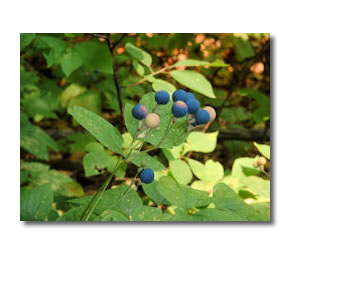 |
 |
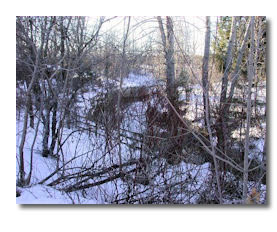 |
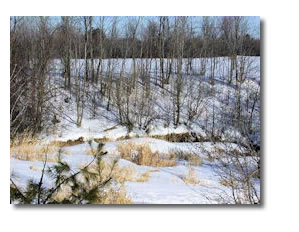 |
|
 |
| |
 |
| |
|
|
|
| |
|
| |
 |
















